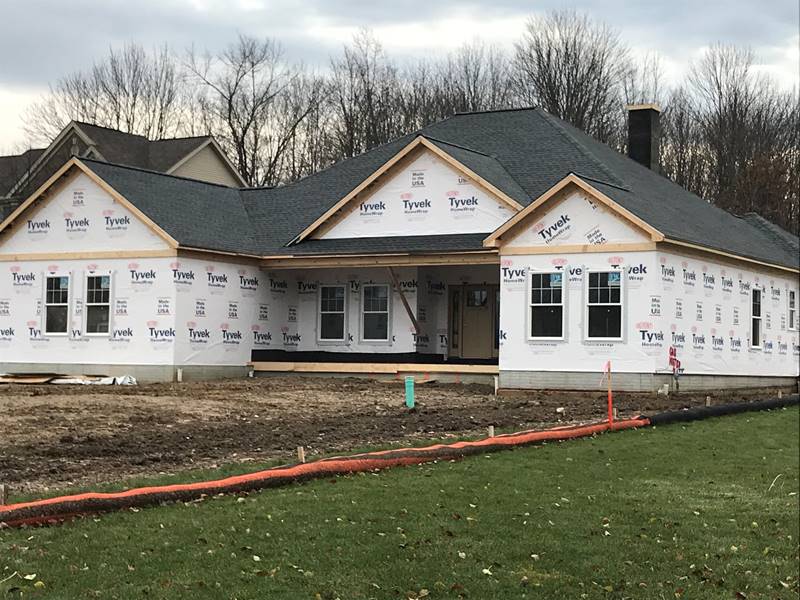Economy

Beige Book Reports Modest Rise in Economic Activity
Written by Sandy Williams
January 14, 2021
Economic activity rose modestly for most Federal Districts as 2020 came to a welcome end. Two Districts reported flat activity while two others noted a decline, said the Federal Reserve its January 2021 Beige Book.
The recent surge in COVID-19 cases resulted in another decline for retail sales and leisure and hospitality services. More Americans chose to shop online over the holidays than heading to their local retail stores.
“Although the prospect of Covid-19 vaccines has bolstered business optimism for 2021 growth, this has been tempered by concern over the recent virus resurgence and the implications for near-term business conditions,” said the Federal Reserve in its Beige Book remarks.
Strong business conditions were noted in manufacturing despite supply chain challenges. Residential home sales remained robust, but commercial real estate markets continued to be weak. The energy sector expanded for the first time since the beginning of the pandemic. Auto sales were softer during the last reporting period.
Employment continued to rise but at a slower pace and with headcounts falling in some Districts. Staffing shortages and lack of qualified workers were reported by manufacturing, construction and transportation. Leisure and hospitality continued to trim staffing as new COVID-19 restrictions were imposed due to the surge in new cases. Wages rose slightly in most regions with some Districts reporting raising wages or improving benefits to retain employees.
Input prices continued to outpace selling prices for finished goods and services. Higher prices were noted in construction and building materials, steel products and shipping services. As a result, some firms plan to increase selling prices in the coming months. Energy prices were higher than the last reporting period, but were still below pre-pandemic levels. Low inventories and rising construction costs continued to push home pricing higher.
District highlights as reported in the January 2021 Beige Book:
Boston – Recovery from the pandemic continued in the final weeks of 2020, with mixed results across sectors. In particular, hospitality and travel remained hard-hit. Among firms that were hiring, some cited difficulty finding workers; other firms held headcounts steady or allowed attrition. A substantial dose of pandemic-related uncertainty clouded an otherwise-optimistic outlook.
Philadelphia – Business activity fell modestly during the current Beige Book period as sharply rising COVID-19 cases created disruptions at worksites and curtailed consumer spending during the holidays. On the whole, activity remained below levels attained prior to the onset of COVID-19. Meanwhile, slight wage growth and modest inflation continued, but employment appeared to edge down.
Cleveland – The District economy lost some momentum in recent weeks. Contacts said that rising cases of COVID-19 curbed demand for goods and services and disrupted supply through its impact on labor availability. Despite the slower growth in demand, firms generally indicated they would hire workers if more were available. Wages and input costs rose moderately, as did selling prices.
Richmond – The regional economy grew modestly in recent weeks. Employment and wages showed modest increases, while prices grew at a moderate pace. The housing market remained strong, while commercial real estate leasing remained soft. Port and trucking volumes were high, and manufacturing activity showed a moderate increase.
Atlanta – Economic activity expanded modestly. Labor markets were mixed. Some nonlabor costs continued to rise. On balance, retail sales were down. Tourism activity slowed. Residential real estate demand remained strong and home prices continued to rise. Challenges persisted in commercial real estate markets. Manufacturing activity rose. Conditions at financial institutions were stable.
Chicago – Economic activity increased modestly, but remained below its pre-pandemic level. Manufacturing increased moderately; business spending and construction and real estate increased modestly; and employment and consumer spending increased slightly. Wages rose modestly and prices were up slightly. Financial conditions were little changed. Agricultural income for 2020 was better than expected.
New York – The regional economy weakened moderately in late 2020, and the labor market has deteriorated somewhat. This weakness was concentrated in the service sector, where activity has been further constrained by a rise in COVID-19 cases, increased restrictions, and cold weather. Consumer spending declined, with holiday sales down from last year and auto sales weakening. Businesses reported some acceleration in wages and selling prices.
St. Louis – Economic conditions generally have been unchanged since the District’s previous report. Reports on overall consumer spending were mixed, while reports on holiday sales focused on an accelerated shift to online shopping. District banking contacts reported slowing growth in loan volumes but anticipate stronger demand in coming months from new PPP loans.
Minneapolis – District economic activity increased modestly. Hiring demand increased, but contacts said health risks and other obstacles kept some workers out of the labor force. Holiday spending was better than many feared, but below last year, especially for small retailers. Commercial construction slowed, and the outlook remained weak. Agricultural conditions improved due to increased commodity prices and government aid.
Kansas City – Economic activity held steady in December, but conditions varied significantly across industries. Retail sales rose sharply, but overall consumer spending fell due to lower auto, restaurant, tourism and healthcare sales. Contacts in manufacturing, professional and high-tech services, and energy all reported increased activity levels, while activity slowed in the transportation, wholesale trade, and real estate sectors.
Dallas – The District economy expanded at a moderate pace, but activity in most industries remained below normal levels. Recovery in the manufacturing and service sector picked up, while retail activity remained weak. The housing market continued to be a bright spot, and real estate lending spurred growth in overall loan volumes. Energy activity accelerated slightly. Employment rose moderately. Outlooks were generally positive, but uncertainty remained elevated.
San Francisco – Economic activity in the District continued to expand at a modest pace. Holiday retail sales picked up, but activity in the services sector was mixed. Conditions in the agricultural and manufacturing sectors strengthened somewhat. Contacts reported strong activity in the housing market and overall healthy conditions in lending markets.

Sandy Williams
Read more from Sandy WilliamsLatest in Economy

Fed Beige Book: Economy improves, but manufacturing weak
While general economic conditions across the US improved slightly over the last six weeks, activity in the manufacturing sector was weak, according to the Fed’s latest Beige Book report.

SMU Community Chat: Simonson with the latest on construction
A lot of economists were predicting a recession last year. Ken Simonson, chief economist for The Associated General Contractors of America (AGC), wasn’t one of them.

Housing starts slip to seven-month low in March
Following a strong February, US housing starts eased through March to a seven-month low, according to the most recent data from the US Census Bureau.

Manufacturing activity in New York state continues to soften
New York state saw a continued decline in manufacturing activity in April, according to the latest Empire State Manufacturing Survey from the Federal Reserve Bank of New York

Worldsteel projects steel demand to grow 1.7% this year
Global steel demand will reach roughly 1.793 million metric tons (1.976 million short tons) this year, an increase of 1.7% over 2023, the World Steel Association (worldsteel) said in its updated Short Range Outlook report. The gain will come after a 0.5% contraction in steel demand in 2023. Demand is forecasted to increase another 1.2% […]
